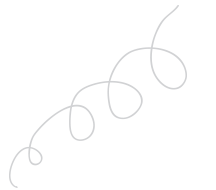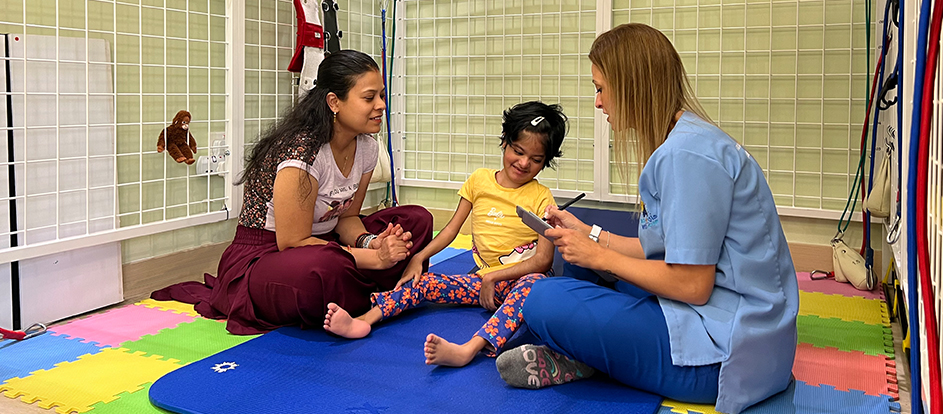

Neurologic Pediatric Physiotherapy for Children with Neurological Diseases

Priscila Cunha Santos
DHA License Number: 26093763-001
Senior Pediatric Physical Therapist
Neurology and Neuroscience, PhD

Neurologic pediatric physiotherapy plays a crucial role with the rehabilitation team in enhancing the quality of life of children with neurological diseases. In this blog article, celebrating International Physiotherapy Day, we’ll delve into the significance of Neuropediatric Physical Therapy with a family-centered approach, specialized assessments, early intervention, diverse therapeutic techniques, and play and technology’s role in enhancing children’s functionality and participation.
KEY PRINCIPLES OF NEUROLOGIC PEDIATRIC PHYSIOTHERAPY
- Family-Centered Approach: Building a Supportive Network
Parents are vital partners in their child’s journey towards progress. A family-centered approach recognizes that parents are experts on their child’s needs and preferences (King, Chiarello, 2014). Collaborating with physiotherapists helps parents become active participants in their child’s treatment. This approach promotes open communication, shared decision-making, and a support network that empowers the child and the caregivers - Specialized Assessment: A Precise Foundation
The journey towards an effective physiotherapy treatment begins with a comprehensive and specialized assessment. This assessment identifies the child’s strengths, limitations, and specific needs. Professionals trained in neurologic pediatric physiotherapy conduct thorough evaluations to develop an individualized treatment plan tailored to the child’s condition. This personalized approach ensures that the interventions address the child’s unique challenges and goals. - Early Intervention: Unleashing Potential
Early intervention is a cornerstone of effective neurologic pediatric physiotherapy. It has been reported that early therapeutic interventions can lead to significant improvements in a child’s motor skills, cognitive development, and overall well-being (Morgan, Fetter, Adde, et al., 2023). The developing brain is highly adaptable, and timely interventions can stimulate neural plasticity, allowing for better outcomes. - Neurodevelopmental, Biomechanical and Task-Oriented Approaches
Neurodevelopmental, task-oriented and biomechanical fundamentals are the primary therapeutic strategies in pediatric physiotherapy. The neurodevelopmental approach focuses on the dynamic reciprocal interaction between the child and therapist for activating optimal sensorimotor processing, task performance, and skill acquisition to enable participation in meaningful activities (Cayo, Diamond, Bovre, et al., 2023). Biomechanical approaches concentrate on the mechanical aspects of movement, like alignment, forces around the joints, and range of motion. On the other hand, task-oriented approaches tend to focus on motor performance, i.e., on learning particular motor skills, with attention to specific aspects of task performance that are causing the child’s difficulty. Combining these approaches ensures comprehensive care, addressing motor skills, muscle strength, balance, coordination, and functionality (Morgan, Fetter, Adde, et al., 2023).
The spider cage, electrical stimulation, whole-body vibration therapy, and many other therapeutic strategies support our primary approaches. They are chosen individually according to the needs of each child and used in physiotherapy sessions to reach the child’s highest potential. - Technology: Empowering Children’s Mobility Journey
Advancements in technology have revolutionized pediatric neurology treatments. Assistive devices, robotics, virtual reality, and artificial intelligence have emerged as innovative tools to engage children and improve their motor skills. These technologies make therapy sessions more interactive, enjoyable, and effective. By using technology, therapists create an environment that promotes engagement and improvements in functionality and participation.
Robot-enhanced repetitive treadmill therapies, such as Lokomat® and Trexo®, are increasingly being used to improve gross motor performance in patients with cerebral palsy. They show significant and clinically meaningful improvements in function in terms of activity and participation (Schroeder AS, Homburg, Warken, et al., 2014). - Motivation: A Pathway to Progress
The neurological learning process only happens when children are engaged and motivated. Incorporating play into neurologic pediatric physiotherapy not only makes therapy enjoyable but also stimulates brain learning and the development of essential skills (Atun-Einy, Berger, Scher, 2013). Playful activities stimulate sensory integration and motor skills, enhance social interaction, and promote cognitive growth. When therapy is fun, children are more likely to participate and work towards their goals actively. - Participation: Beyond Therapy Sessions
The impact of neurologic pediatric physiotherapy extends beyond therapy sessions. A child’s ability to have fun with family and friends, and participate in daily life activities at home, school, and within the community is an accurate measure of success (Rosenbaum and Gorter, 2011). Therapists collaborate with parents, educators, and caregivers to ensure the child’s progress is integrated into their everyday life.
OUTCOMES AND IMPACT:
- Improved motor function and overall motor skills
- Enhanced mobility: children will be more engaged in various activities with their peers.
- Increased independence, especially when completing daily tasks and activities. This will empower children to overcome barriers and maximize their potential.
- Enhanced participation and quality of life contributing to emotional well-being, self-esteem, and social involvement.
- Long-term benefits are mainly related to sustained improvement and a better long-term prognosis.
CONCLUSION
Neurologic pediatric physiotherapy is a powerful ally in children’s journey with neurological diseases. Through specialized assessments, a family-centered approach, early intervention, several therapeutic approaches, technological advancements, and motivation to participate, children can achieve their maximal potential. As parents, your dedication to providing the best care empowers your child to overcome challenges and lead a happy life. We, the High Hopes physiotherapists team, following the principles described above, are willing to embark on this journey with you.
Do not hesitate to contact us for more information or to book a consultation.
Sources:
- Atun-Einy O, Berger SE, Scher A. Assessing motivation to move and its relationship to motor development in infancy. Infant Behavior and Development. 2013, Jun 1;36(3):457-69.
- Cayo C, Diamond M, Bovre T, et al. What is NDT? The NDT (Neuro-Developmental Treatment) Definition. https://www.ndta.org/ORIGINAL-What-is-NDT. Accessed in August 2023.
- King G, Chiarello L. Family-Centered Care for Children with Cerebral Palsy: Conceptual and Practical Considerations to Advance Care and Practice. Journal of Child Neurology. 2014;29(8):1046-1054.
- Morgan C, Fetters L, Adde L, et al. Early intervention for children aged 0 to 2 years with or at high risk of cerebral palsy: international clinical practice guideline based on systematic reviews. JAMA pediatrics. 2021, Aug 1;175(8):846-58.
- Rosenbaum P, Gorter JW. The ‘F-words’ in childhood disability: I swear this is how we should think! Child: Care, Health and Development. 2011,38(4), 457 – 463.
- Schroeder AS, Homburg M, Warken B, et al. Prospective controlled cohort study to evaluate changes of function, activity and participation in patients with bilateral spastic cerebral palsy after Robotenhanced repetitive treadmill therapy. European Journal of Paediatric Neurology. 2014, 18(4): 502 – 510.


